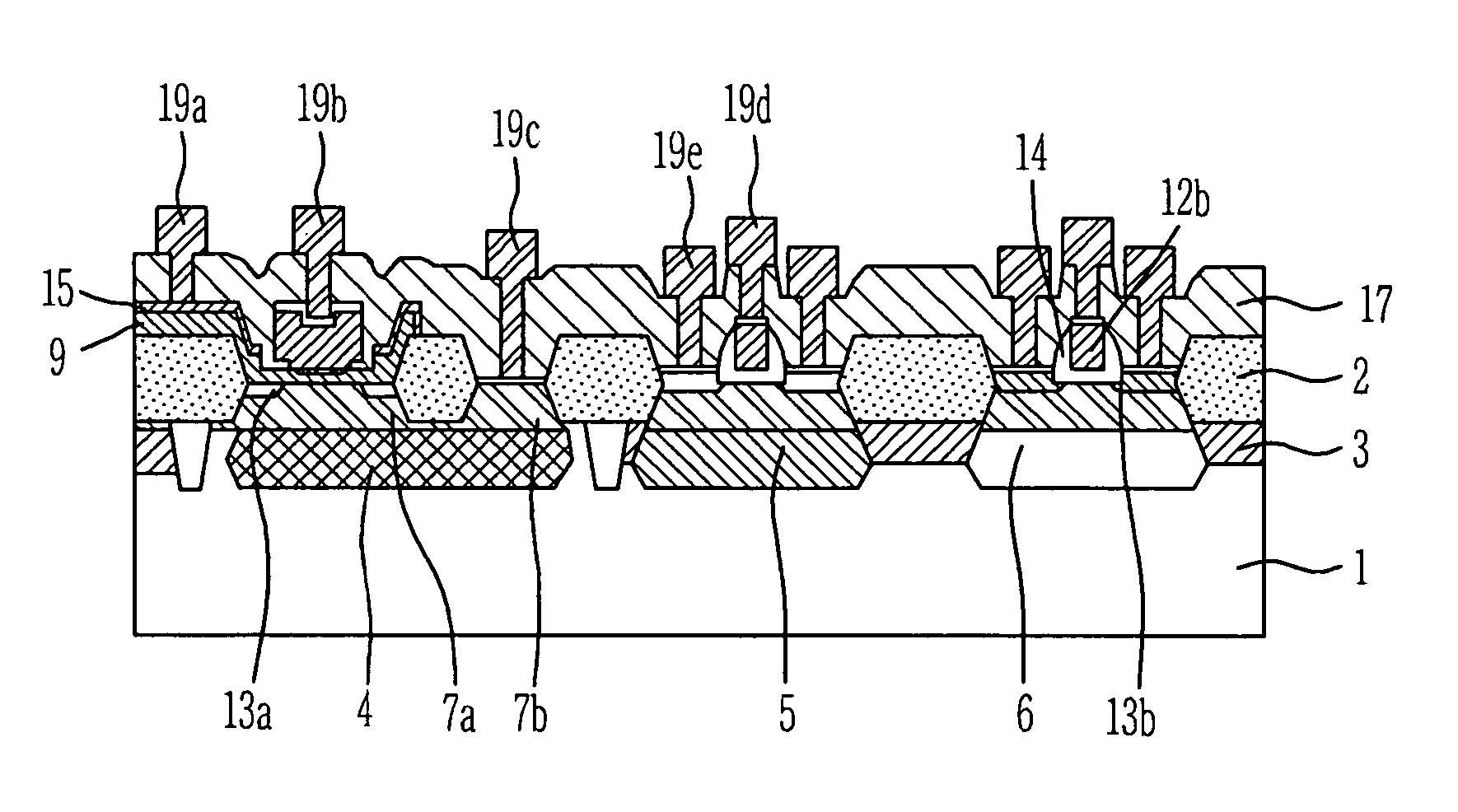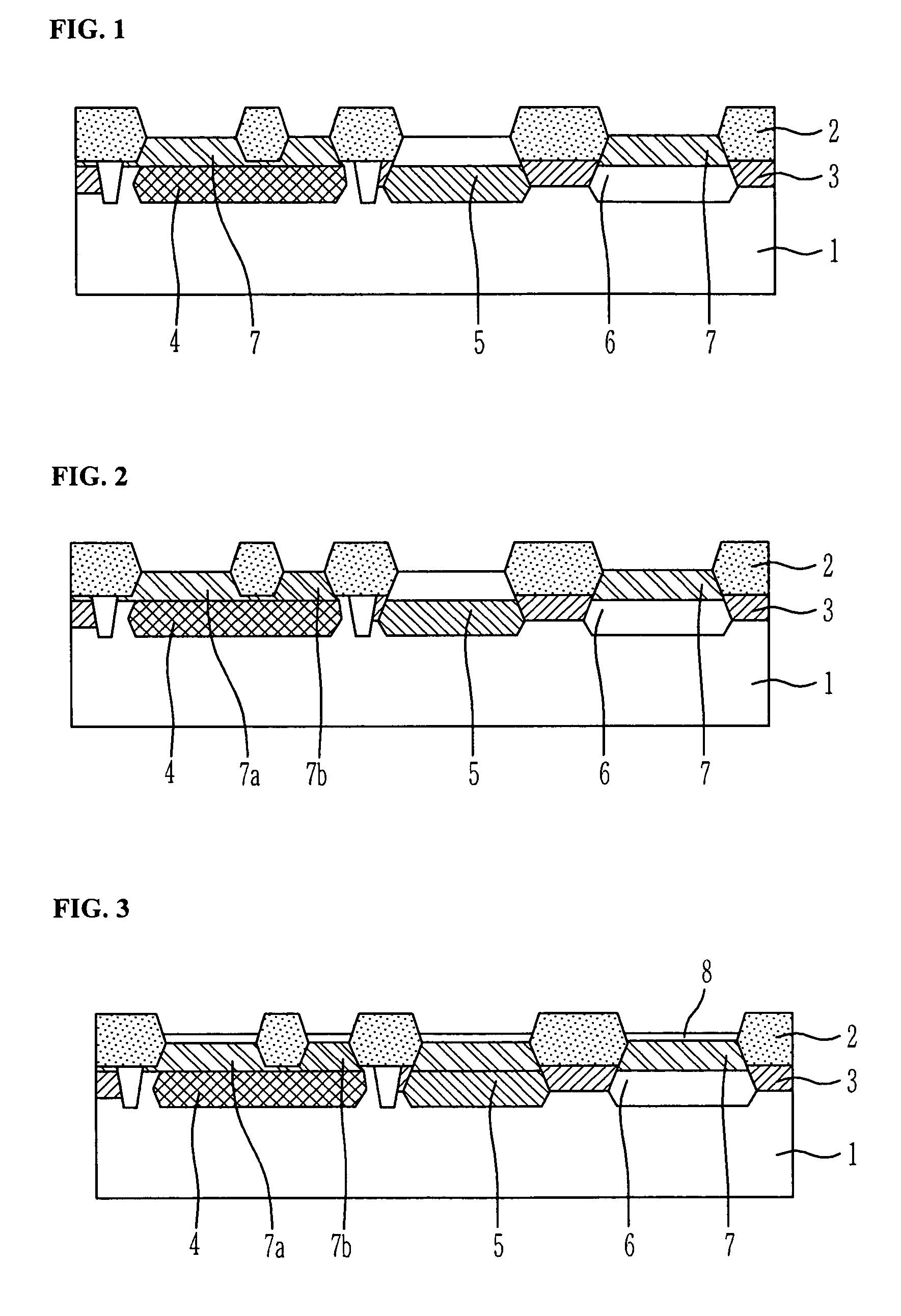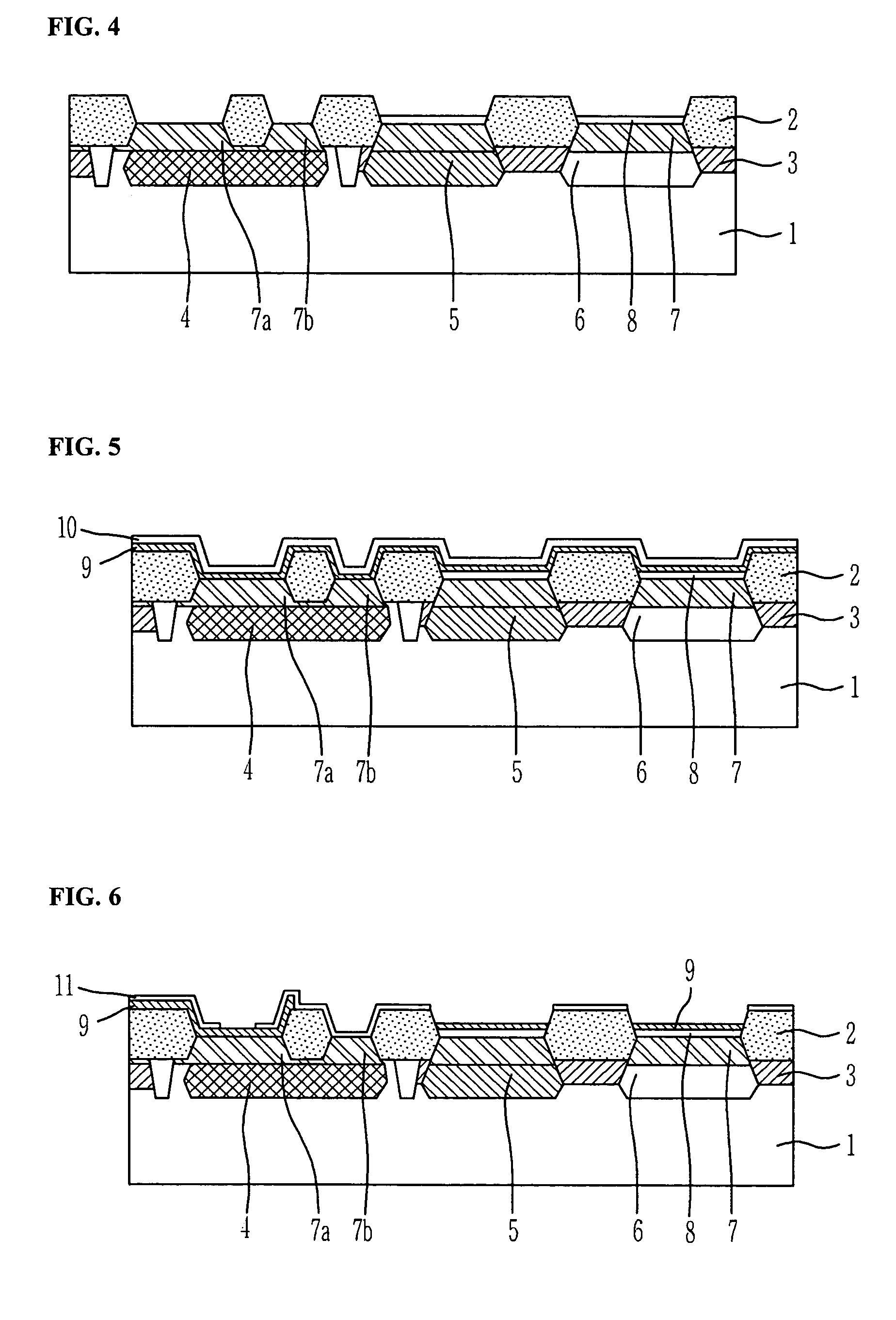Method of fabricating SiGe Bi-CMOS device
a bi-cmos and semiconductor technology, applied in the direction of semiconductor devices, basic electric elements, electrical equipment, etc., can solve the problems of difficult realization of nano-scale ultra-high speed and ultra-low power devices, and achieve the effect of preventing an abrupt increase of contact resistance and improving the radio frequency (rf) characteristic of heterojunction bipolar transistors
- Summary
- Abstract
- Description
- Claims
- Application Information
AI Technical Summary
Benefits of technology
Problems solved by technology
Method used
Image
Examples
Embodiment Construction
[0018]Hereinafter, an exemplary embodiment of the present invention will be described in detail. However, the present invention is not limited to the embodiments disclosed below, but can be implemented in various types. Therefore, the present embodiment is provided for complete disclosure of the present invention and to fully inform the scope of the present invention to those ordinarily skilled in the art.
[0019]FIGS. 1 to 15 are cross-sectional views illustrating a method of fabricating a silicon germanium (SiGe) Bi-CMOS device according to an exemplary embodiment of the present invention.
[0020]Referring to FIG. 1, an isolation junction region 3 and an isolation layer 2 are formed on a semiconductor substrate 1 to define a silicon germanium (SiGe) heterojunction bipolar transistor (HBT) region, an NMOS transistor (NMOS) region, and a PMOS transistor (PMOS) region. An N+ sub-collector region 4 is formed in the substrate 1 of the HBT region, a P-well region 5 is formed in the substrat...
PUM
 Login to View More
Login to View More Abstract
Description
Claims
Application Information
 Login to View More
Login to View More - R&D
- Intellectual Property
- Life Sciences
- Materials
- Tech Scout
- Unparalleled Data Quality
- Higher Quality Content
- 60% Fewer Hallucinations
Browse by: Latest US Patents, China's latest patents, Technical Efficacy Thesaurus, Application Domain, Technology Topic, Popular Technical Reports.
© 2025 PatSnap. All rights reserved.Legal|Privacy policy|Modern Slavery Act Transparency Statement|Sitemap|About US| Contact US: help@patsnap.com



